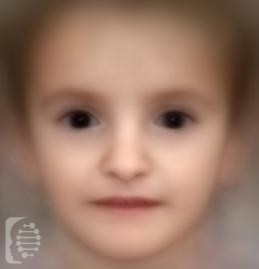What is SHORT syndrome?
SHORT syndrome is a rare multi-system genetic condition, meaning it affects multiple systems and organs of the body.
There are currently less than 50 cases of this rare disease recorded worldwide, to date.
The syndrome is named for its main symptoms: short stature, ocular depression, Rieger anomaly and teething delay.
Syndrome Synonyms:
Lipodystrophy, Partial, with Rieger Anomaly, and Short Stature; Short Stature, Hyperextensibility, Hernia, Ocular Depression, Rieger Anomaly, and Teething Delay
What gene change causes SHORT syndrome?
Mutations in the PIK3R1 gene are responsible for causing the syndrome. It is inherited in an autosomal dominant pattern.
In the case of autosomal dominant inheritance, just one parent is the carrier of the gene mutation, and they have a 50% chance of passing it onto each of their children. Syndromes inherited in an autosomal dominant inheritance are caused by just one copy of the gene mutation.
In some cases, a genetic syndrome may be the result of a de-novo mutation and the first case in a family. In this case, this is a new gene mutation which occurs during the reproductive process.
What are the main symptoms of SHORT syndrome?
- The main symptoms include a short stature, and a delay in the eruption of an individual’s teeth.
- The syndrome also presents with Rieger anomaly which means issues with the eyes and potentially glaucoma, hyperextensibility in the joints, the potential for intestinal hernias, as well as ocular depression or deep set eyes.
- The syndrome may affect multiple organs within the body and present with multiple birth defects. Growth may be affected in the uterus and a low birth weight is to be expected.
- The main facial features of the condition include a triangular face, small chin with a dimple, the loss of fat under the skin, hearing loss and abnormally placed ears.
Possible clinical traits/features:
Short stature, Opacification of the corneal stroma, Hernia of the abdominal wall, Hyperglycemia, Glaucoma, Enlarged epiphyses, Glucose intolerance, Hypoplasia of the zygomatic bone, Underdeveloped nasal alae, Hypodontia, Delayed speech and language development, Hypertelorism, Brachydactyly, Diabetes mellitus, Deeply set eye, Posterior embryotoxon, Small for gestational age, Clinodactyly of the 5th finger, Dental malocclusion, Malar flattening, Delayed eruption of teeth, Delayed skeletal maturation, Myotonia, Abnormal hair quantity, Radial deviation of finger, Premature skin wrinkling, Triangular face, Weight loss, Clinodactyly, Frontal bossing, Dimple chin, Prominent forehead, Telecanthus, Wide nasal bridge, Cataract, Aplasia/Hypoplasia of the iris, Abnormality of the immune system, Abnormality of the hip bone, Abnormal anterior chamber morphology, Birth length less than 3rd percentile, Abnormal pupil morphology, Sensorineural hearing impairment, Hand polydactyly, Prominent supraorbital ridges, Rieger anomaly.
How is it diagnosed?
To find out if someone has a diagnosis of SHORT syndrome, it is important to have a consultation and evaluation with a clinical genetic specialist. Specialists may also suggest specific genetic testing or other types of tests to help reach a diagnosis. FDNA’s AI technology can help speed up the diagnostic process by analyzing facial features and other health information.

